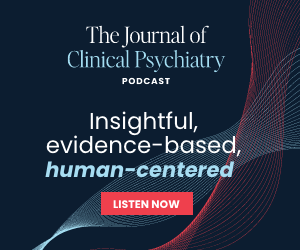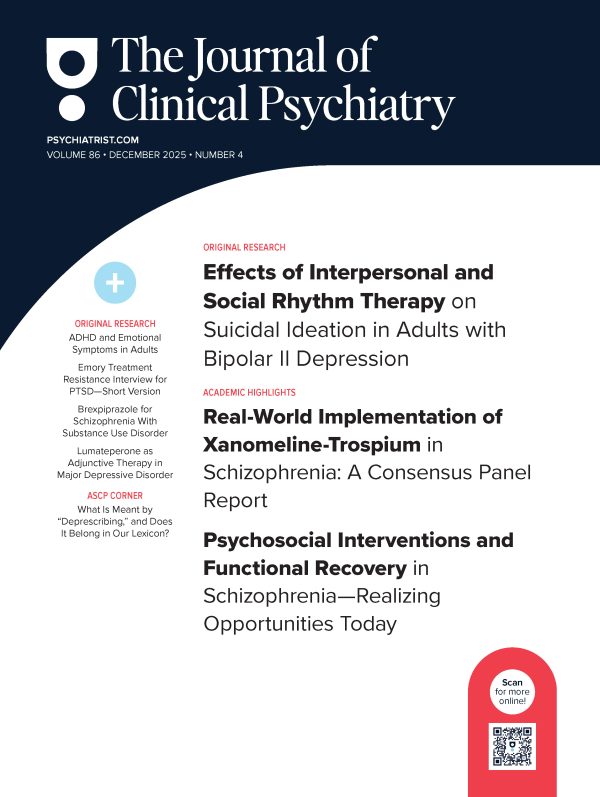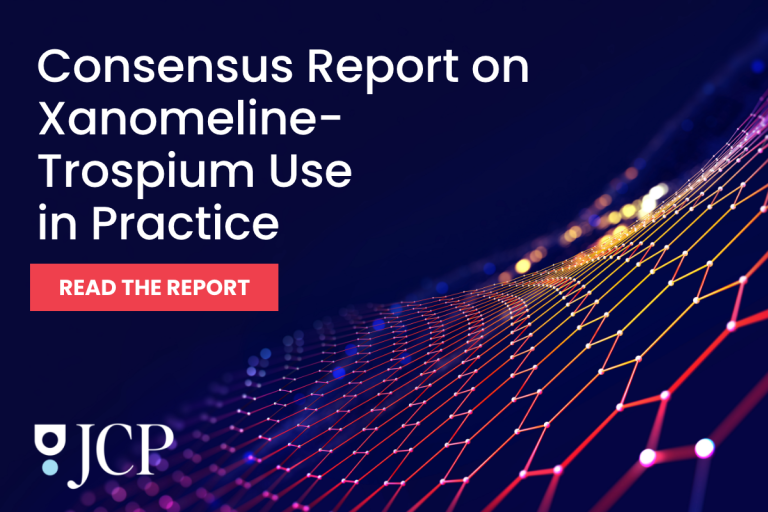
ABSTRACT
Objective: Current treatments for behavioral and psychological symptoms of dementia (BPSD) are of limited efficacy. Electroconvulsive therapy (ECT) is an effective and safe treatment for a range of psychiatric disorders, with some limited data suggesting a role in treating BPSD. We sought to expand this growing literature by examining—in a rigorous way with a larger sample size than in previous reports—the potential of ECT as a treatment for comorbid depression and dementia.
Methods: Drawing on nationally representative 2014–2015 Medicare claims data, propensity score methods were used to create two comparable cohorts consisting of ECT-treated patients (n = 147) and controls (n = 415) who were hospitalized with a principal psychiatric diagnosis. Functional outcomes were compared before and after hospitalization (when ECT was initiated for the ECT cohort).
Results: Both cohorts generally declined in all functional outcomes over the time period observed. The ECT cohort had a slower rate of functional decline in bathing (Cohen d = –0.05 vs 0.38; P < .001) and transferring (d = 0.18 vs 0.45; P = .031) compared to matched controls. In multivariate analysis, ECT patients also fared better in the overall activities of daily living summary score at 180 days (coefficient = −0.10; 95% CI, −0.19 to 0.01), though these effects were small. No difference was seen in cognition or ambulation.
Discussion: Receiving ECT does not worsen the trajectory of functional outcomes compared to not receiving ECT in older adults with comorbid depression. Randomized clinical trials are needed to more definitively examine the causal effect of ECT on functional outcomes of individuals with dementia.
Members Only Content
This full article is available exclusively to Professional tier members. Subscribe now to unlock the HTML version and gain unlimited access to our entire library plus all PDFs. If you’re already a subscriber, please log in below to continue reading.
References (33)

- Alzheimer’s Association. 2020 Alzheimer’s disease facts and figures. Alzheimers Dement. 2020;16(3):391–460. CrossRef
- Steinberg M, Shao H, Zandi P, et al; Cache County Investigators. Point and 5-year period prevalence of neuropsychiatric symptoms in dementia: the Cache County Study. Int J Geriatr Psychiatry. 2008;23(2):170–177. PubMed CrossRef
- Zhao QF, Tan L, Wang HF, et al. The prevalence of neuropsychiatric symptoms in Alzheimer’s disease: systematic review and meta-analysis. J Affect Disord. 2016;190:264–271. PubMed CrossRef
- Bränsvik V, Granvik E, Minthon L, et al. Mortality in patients with behavioural and psychological symptoms of dementia: a registry-based study. Aging Ment Health. 2021;25(6):1101–1109. PubMed CrossRef
- Lyketsos CG, Lopez O, Jones B, et al. Prevalence of neuropsychiatric symptoms in dementia and mild cognitive impairment: results from the cardiovascular health study. JAMA. 2002;288(12):1475–1483. PubMed CrossRef
- Steinberg M, Sheppard JM, Tschanz JT, et al. The incidence of mental and behavioral disturbances in dementia: the cache county study. J Neuropsychiatry Clin Neurosci. 2003;15(3):340–345. PubMed CrossRef
- McDermott CL, Gruenewald DA. Pharmacologic management of agitation in patients with dementia. Curr Geriatr Rep. 2019;8(1):1–11. PubMed CrossRef
- Tampi RR, Bhattacharya G, Marpuri P. Managing behavioral and psychological symptoms of dementia (BPSD) in the era of boxed warnings. Curr Psychiatry Rep. 2022;24(9):431–440. PubMed CrossRef
- Dyer SM, Harrison SL, Laver K, et al. An overview of systematic reviews of pharmacological and non-pharmacological interventions for the treatment of behavioral and psychological symptoms of dementia. Int Psychogeriatr. 2018;30(3):295–309. PubMed CrossRef
- Lenzer J. FDA warns about using antipsychotic drugs for dementia. BMJ. 2005;330(7497):922. PubMed CrossRef
- Weiner R, Coffey C, Fochtmann L, et al. The Practice of Electroconvulsive Therapy: Recommendations for Treatment, Training, and Privileging: A Task Force Report of the American Psychiatric Association. 2nd ed. 2001.
- Rhee TG, Sint K, Olfson M, et al. Association of ECT with risks of all-cause mortality and suicide in older Medicare patients. Am J Psychiatry. 2021;178(12):1089–1097. PubMed CrossRef
- Burgut FT, Popeo D, Kellner CH. ECT for agitation in dementia: is it appropriate? Med Hypotheses. 2010;75(1):5–6. PubMed CrossRef
- Tampi RR, Tampi DJ, Young J, et al. The place for electroconvulsive therapy in the management of behavioral and psychological symptoms of dementia. Neurodegener Dis Manag. 2019;9(6):283–288. PubMed CrossRef
- Acharya D, Harper DG, Achtyes ED, et al. Safety and utility of acute electroconvulsive therapy for agitation and aggression in dementia. Int J Geriatr Psychiatry. 2015;30(3):265–273. PubMed CrossRef
- Zhang QE, Sha S, Ungvari GS, et al. Demographic and clinical profile of patients with dementia receiving electroconvulsive therapy: a case-control study. J ECT. 2016;32(3):183–186. PubMed CrossRef
- Isserles M, Daskalakis ZJ, Kumar S, et al. Clinical effectiveness and tolerability of electroconvulsive therapy in patients with neuropsychiatric symptoms of dementia. J Alzheimers Dis. 2017;57(1):45–51. PubMed CrossRef
- Ujkaj M, Davidoff DA, Seiner SJ, et al. Safety and efficacy of electroconvulsive therapy for the treatment of agitation and aggression in patients with dementia. Am J Geriatr Psychiatry. 2012;20(1):61–72. PubMed CrossRef
- Hermida AP, Tang YL, Glass O, et al. Efficacy and safety of ECT for behavioral and psychological symptoms of dementia (BPSD): a retrospective chart review. Am J Geriatr Psychiatry. 2020;28(2):157–163. PubMed CrossRef
- Chu CW, Chien WC, Chung CH, et al. Electroconvulsive therapy and risk of dementia-a nationwide cohort study in Taiwan. Front Psychiatry. 2018;9:397. PubMed CrossRef
- Osler M, Rozing MP, Christensen GT, et al. Electroconvulsive therapy and risk of dementia in patients with affective disorders: a cohort study. Lancet Psychiatry. 2018;5(4):348–356. PubMed CrossRef
- Rao V, Lyketsos CG. The benefits and risks of ECT for patients with primary dementia who also suffer from depression. Int J Geriatr Psychiatry. 2000;15(8):729–735. PubMed CrossRef
- Centers for Medicare and Medicaid Services. Home Health Quality Reporting Program. https://www.cms.gov/Medicare/Quality-Initiatives-Patient-Assessment-Instruments/HomeHealthQualityInits. Accessed February 21, 2020.
- Chronic Conditions Data Warehouse. Condition categories. https://www2.ccwdata.org/web/guest/condition-categories. Accessed December 14, 2019.
- Olfson M, Wall M, Wang S, et al. Short-term suicide risk after psychiatric hospital discharge. JAMA Psychiatry. 2016;73(11):1119–1126. PubMed CrossRef
- Kessler RC, Warner CH, Ivany C, et al; Army STARRS Collaborators. Predicting suicides after psychiatric hospitalization in US Army soldiers: the Army Study To Assess Risk and rEsilience in Servicemembers (Army STARRS). JAMA Psychiatry. 2015;72(1):49–57. PubMed CrossRef
- van Walraven C, Austin PC, Jennings A, et al. A modification of the Elixhauser comorbidity measures into a point system for hospital death using administrative data. Med Care. 2009;47(6):626–633. PubMed CrossRef
- Cohen J. Statistical Power Analysis for the Behavioral Sciences. 2nd ed. L. Erlbaum Associates; 1988:567.
- Mlinac ME, Feng MC. Assessment of activities of daily living, self-care, and independence. Arch Clin Neuropsychol. 2016;31(6):506–516. PubMed CrossRef
- Espinoza RT, Kellner CH. Electroconvulsive Therapy. N Engl J Med. 2022;386(7):667–672. PubMed CrossRef
- Tielkes CE, Comijs HC, Verwijk E, et al. The effects of ECT on cognitive functioning in the elderly: a review. Int J Geriatr Psychiatry. 2008;23(8):789–795. PubMed CrossRef
- Luccarelli J, Forester BP, Dooley M, et al. The effects of baseline impaired global cognitive function on the efficacy and cognitive effects of electroconvulsive therapy in geriatric patients: a retrospective cohort study. Am J Geriatr Psychiatry. 2022;30(7):790–798. PubMed CrossRef
- Hausner L, Damian M, Sartorius A, et al. Efficacy and cognitive side effects of electroconvulsive therapy (ECT) in depressed elderly inpatients with coexisting mild cognitive impairment or dementia. J Clin Psychiatry. 2011;72(1):91–97. PubMed CrossRef





